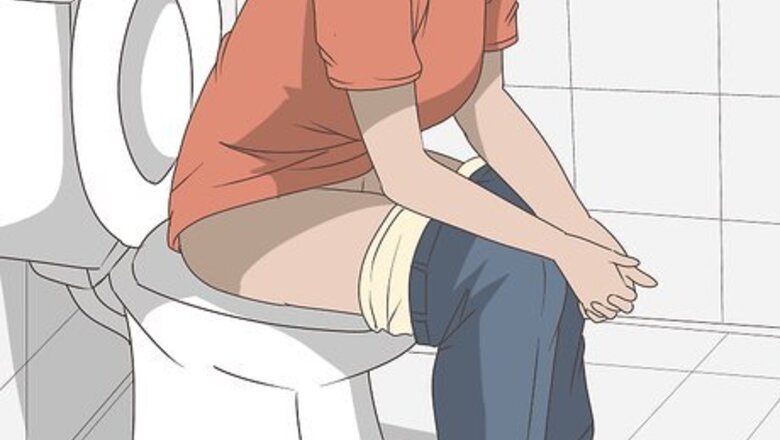
views
Recognizing the Basic Symptoms
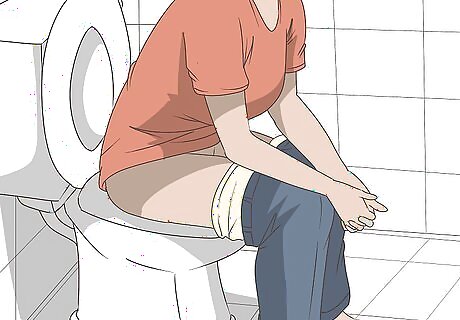
Check if you’re using the restroom frequently. A really common symptom of a UTI is having to use the bathroom often. Think about how many times you visit the restroom on a normal day, and compare it to how you’re currently feeling. If you need to urinate a lot, there’s a chance that you may have a UTI. For instance, you may go to the bathroom 3-4 times on a usual day. If you’re going to the bathroom 10 times, that may be a sign that you have a UTI.
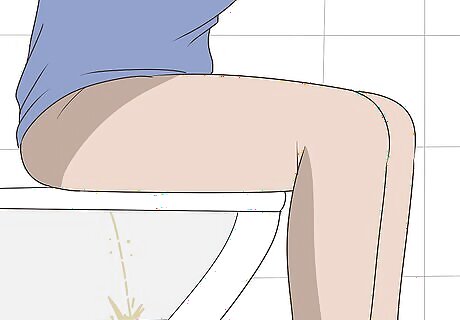
See if you’re only urinating a small amount. If you’re going to the bathroom but not peeing much, you may have a UTI. You don’t have to collect or measure your urine when you go—just compare each trip with your average restroom visit. This can give you a better idea of whether or not you have a UTI. For example, if you’re only urinating a few drops, you may have a UTI.
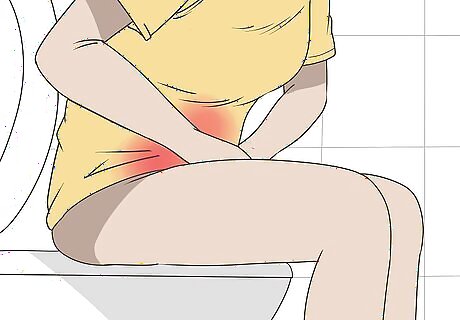
Watch for a burning feeling when you use the restroom. Pay attention to how you feel when you use the restroom. Unfortunately, UTIs can make urinating feel really uncomfortable, and you may notice a burning or painful sensation as you go to the bathroom. If you notice this symptom, there’s a good chance that you may have a UTI.
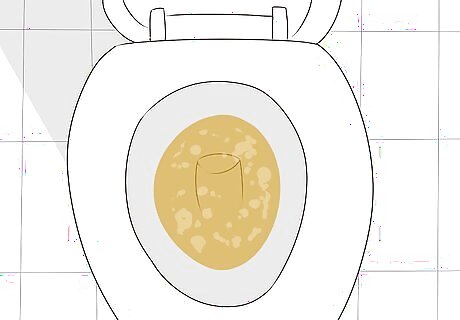
Examine your urine to see if it’s cloudy or discolored. Look in the toilet bowl and see if your urine looks any different than it usually does. Be on the lookout for signs of cloudy urine, along with red-colored pee, as these are both signs of a UTI. Urine produced during a UTI tends to smell especially bad.
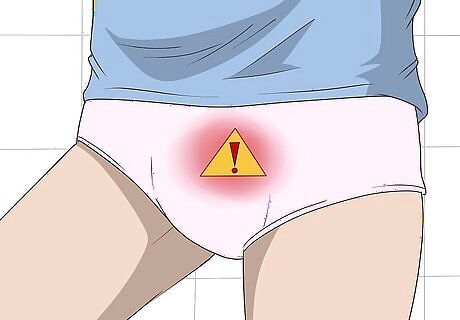
Identify pelvic pain as a common sign of a UTI in women. Track any strange pain that you’re feeling, like discomfort around the center of your hips and along the pubic bone. If you’re experiencing a lot of discomfort here, you may have a UTI.

Search for pain near your ribs. Feel around your ribs to see if anything feels tender or sore. Think about the days leading up to this symptom, and try to remember if some minor injury can explain the pain. If you can’t think of any reasonable explanation, then your rib and back pain may be a sign of a UTI.
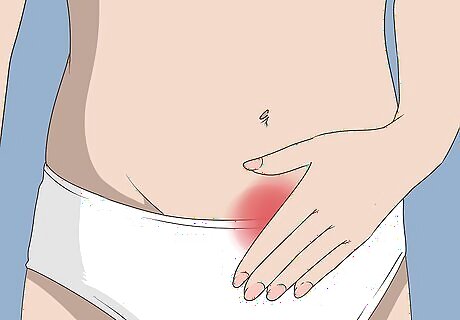
Look for a feeling of pressure below your stomach. UTIs can create a lot of uncomfortable sensations in your body, like pressure near your lower abdomen. Take note of when these symptoms occur, and if the sensation is pretty persistent. If there are no other underlying causes, your stomach pain may be a sign of a UTI. For instance, if you’re on your period, you may be able to connect the discomfort to cramps.
Check yourself for signs of chills or a fever. Monitor your temperature to see if it’s higher than usual. Additionally, see if you have chills, which is another severe symptom of a UTI. If you have either of these symptoms, talk to a doctor for further advice. These symptoms may be more common in elderly people or people with neurodegenerative disorders.Know if You Have a UTI Step 8 Version 2.jpg
Checking with Test Strips
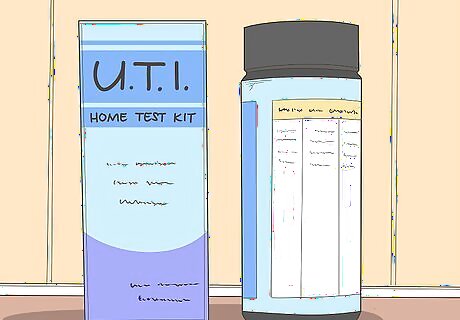
Grab a UTI test to get conclusive results. Visit your local pharmacy and pick up an at-home UTI test kit, which can give you more conclusive results than just monitoring your symptoms. Remove a single dipstick from the packaging, which you’ll use to test your urine. Similar to other urine tests, a UTI test uses color-based results to let you know if you have an infection or not. At-home UTI tests typically check your urine for nitrites and/or leukocytes, which are found within infected urine.
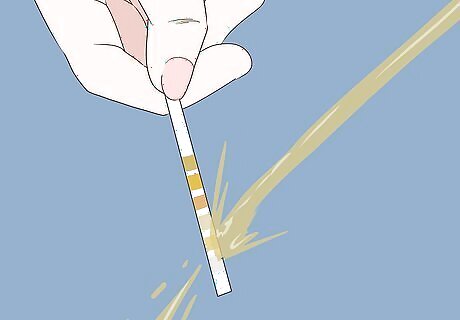
Place the dipstick in your urine stream. Go to the restroom as you normally do. While you’re peeing, carefully stick 1 end of the dipstick beneath your urine. Leave it there for a few seconds so the test stick can soak up enough urine. Double-check the testing instructions for more specific guidance on how to use your exact kit.
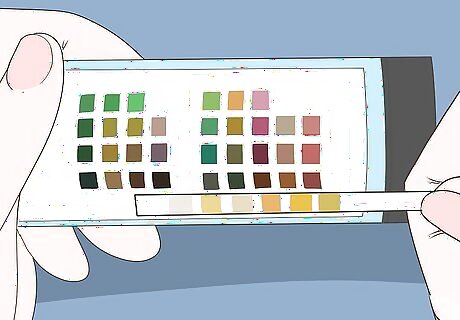
Compare the dipstick to the provided color chart. Within 1-2 minutes, place your test strip next to the provided results chart, which should come with your test kit. Examine the colors to see if your urine contains leukocytes and nitrites—if it contains a significant amount of either substance, there’s a very good chance that you may have a UTI. Most test kits are time-sensitive and need to be checked immediately.
Comparing Types of UTIs
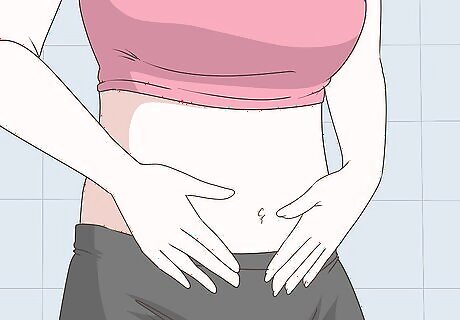
Identify a bladder infection through pain in your lower abdomen. Bladder infections are a really common type of UTI and can be identified with a lot of different symptoms. Cloudy, foul-smelling urine is a telltale sign, along with abdominal pain and a burning feeling when you use the restroom. When you have a bladder infection, or cystitis, you’re not going to be feeling your best. If a young kid has a bladder infection, they may come down with a fever.
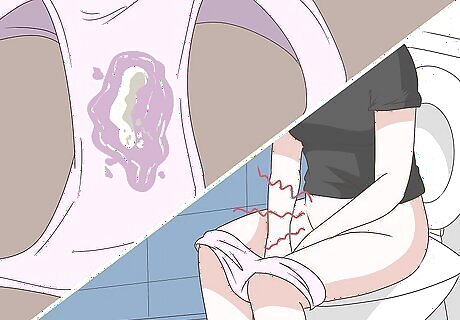
Look for discharge and a burning sensation in cases of urethritis. A UTI based lower in your urinary tract, also known as urethritis, doesn’t come with quite so many symptoms. Be on the lookout for an uncomfortable burning sensation when you pee, along with any unfamiliar discharge.

Recognize severe symptoms as a sign of kidney-based UTI. Look for really strong symptoms, like nausea, throwing up, a high fever, chills, and pain along your back and sides. If you’re experiencing these symptoms, there’s a good chance you have acute pyelonephritis, or a UTI that’s based in your kidneys.

Visit a doctor if you think you have a UTI. Schedule an appointment with your local doctor, who can help confirm if you have an infection. Depending on your unique case, your doctor may test your urine or perform other types of tests that help them make an accurate diagnosis. Your doctor will likely prescribe antibiotics or another UTI-specific medication to help you heal. For instance, Fosfomycin, Cephalexin, and Trimethoprim/sulfamethoxazole are common medications for UTIs.




















Comments
0 comment